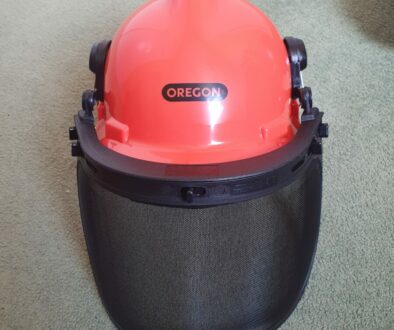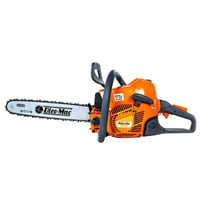How To Sharpen A Chainsaw With A Hand File
I see far too many people struggling with a blunt chainsaw, so today we are going to discuss how to sharpen a chainsaw with a hand file.

Using a blunt chainsaw is extremely painful and puts unnecessary workload on the operator and extreme pressure on the actual chainsaw itself. You shouldn’t be forcing the chainsaw to cut, it should do the work for you, literally, the weight of the chainsaw should be enough to cut efficiently.
There are different methods of sharpening chainsaw’s, for example, electric chainsaw sharpener’s, products that you attach to the end of your chainsaw chain and the traditional hand file! I have never actually used anything else to sharpen a chainsaw other than a hand file, probably the most important fact is to be able to hold the chainsaw securely, ideally in an engineer’s vice, if this is available. There’s nothing worse than trying to sharpen the chainsaw when it’s moving about all over the place!
Sharpening a chainsaw chain by hand is a method that anyone can use, I normally buy a box of files which actually last me for ages. However, there is nothing worse than using a blunt file, eventually, the files where they get a bit clogged up with chainsaw oil and won’t cut efficiently.
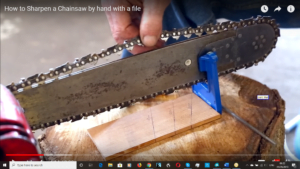
Stump Vice
In the video, the first method shown is using a small clamp and sharpening the chain attached to the chainsaw, this is traditionally the way that I would sharpen my chainsaw. A stump vice is used in the video to secure the chainsaw. The stump vice is pounded into the wood which then enables the vice to be secure to hold the chainsaw.
As the video shows, the chain is loose and needs tightening, if you try and sharpen the chainsaw with the chain loose, you will not be able to sharpen the chain properly as it will be all over the place!
You Can See Our Chainsaw Sharpening Kit Below
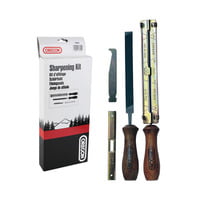
Tightening The Chain
To tighten the chain, released the two pinch bolts, most chainsaws have two pinch bolts that secure the chain, although, some of the smaller chainsaws’s just have one larger pinch bolt. Once you have released the two pinch bolts, you will need a screwdriver to tighten up the chain. The video shows where the screw is to tighten up the chain, on some models of chainsaw the screw can be next to the pinch bolts. However, in my experience, they are generally at the front of the chainsaw as the video shows.
Tighten the chain reasonably tight so that you can still turn the chain by hand, by doing this the chain is nice and secure for sharpening. If you over tighten the chain you will find that you cannot turn the chain properly, so just release the chain slightly to enable you to turn the chain freely.
Make Sure You Can See What You’re Doing!
It’s important to see what you are doing and is the author of this video explains, he has a decent pair of glasses on, which are doubled up with a second pair of lenses, for extra clarity and vision. Don’t work blind, it doesn’t work!

Using The File
Make sure and start at the end of the bar where it is nice and secure and where there is no movement. I personally use a chainsaw guide which just fits on the file and helps you to get the correct angle. In this video, the gentleman has marked a piece of wood with the correct angle of the chainsaw tooth. Many chains nowadays actually have the angle stamped on the end of each tooth so you know which angle to take. In my experience, the more practice you have of sharpening a chain the easier it becomes.
Make sure that you keep the file level, in other words, 90° to the bar, in this way you’ll be sharpening the tooth perfectly. If you are moving around all over the place you will not get a nice sharp edge.
Make sure to apply gentle pressure on the forward strokes, a file only sharpens on the forward stroke. After three or four strokes the particular tooth should be sharp in normal circumstances.
Note that you don’t actually have to touch the teeth, as you sharpen one tooth, you can move on to the next one by pulling the chain round with the file. Avoid touching the chain with your hands as obviously the teeth become sharp as you file them!
You Can See Our Powered Chainsaw Sharpeners Below
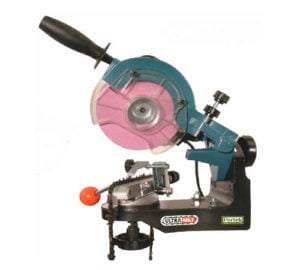
Sharpening On The Bench
Another way to sharpen the chain is to remove the chain and put it into an engineers vice, which is normally fitted to a workbench. However, I have seen some tree surgeons have a vice fitted on their truck or some have a portable vice that fits on their wood chipper!
Sharpening in a bench file takes a little bit of practice as the file tends to move around a bit more. But the good thing is that practice makes perfect.
In the video, the gentleman has 30° and 25° marks on engineering vice for optimum accuracy. As I mentioned earlier and I believe most chains have this feature now, there’s actually a mark on the chain which shows you the correct angle. It really is a helpful feature indeed.
When you are sharpening you really need to be pushing into the tooth rather than pushing down. Make sure you are using the correct size file so that the file fits correctly into the tooth, by doing this you will be getting a perfectly sharp edge.
I don’t normally count the number of strokes that are used to sharpen a chain, although, I would say on average I use 3 to 4 strokes. As I sharpen the chain, I try to look at the chain visually to look for any damage and sharpen accordingly.
Occasionally when you are filing your chain tooth, a very slight burr can happen, to remove this just run the file gently over the top of the tooth until it is smooth.
Make Sure You Are Holding The File Correctly
It’s very easy to become sloppy when you are filing a chainsaw tooth, make sure that you have the correct fitting file for your particular size of chain, this is highly important. You do not want to be pushing too hard downwards or upwards as this can have the wrong effect on the chain. It just wants to be seated tightly in the tooth so that you can get a nice sharp cutting edge. Make sure that you file away any damage on the tooth so that it has a nice even edge. Make sure as the video shows that you do not move the file around, for example, twisting and not keeping the file square.
After every few strokes of the file I normally tap the file which removes excess iron filings and helps to keep the file clean and sharp for maximum efficiency. In the video the gentleman says that he doesn’t turn his file, I normally just twist the file so that the file gets an even amount of use, I’m not sure if this is the correct way but it seems to work for me.
The Teeth Alternate
When you are sharpening your chain, you will notice that the teeth alternate, so in other words you have to sharpen every other tooth and then turn the chainsaw round or the chain around to sharpen the other tooth. Do not try and sharpen the whole chain from one angle, it won’t work!
There Are Other Ways To Sharpen Your Chainsaw!
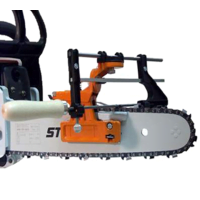
Check The Rakers
Make sure that the rakers are at the correct height, these are the depth gauge teeth or rakers that help to control smooth cutting. Ideally you need to purchase a simple depth gauge as shown in the video.
Place the depth gauge on the chain and if the rakers are high they will just stick out slightly above the gauge. Some people file the rakers with the gauge in place, however, this can wear the gauge after a period of time, so, I prefer to remove the depth gauge and then file the raker tooth. After two or three sweeps of the file, check the height of the tooth with the gauge and repeat if necessary.
You need a small flat file to file for the raker teeth down. Make sure you file the raker tooth down in the same direction as you file the tooth. Failure to do this will make the file chatter and you will not get a nice edge on the raker tooth.
Once you have the raker teeth filed down to the correct height, sometimes the top of the raker teeth can have a sharp edge on. Just take file and round that edge off fractionally, taking care not to touch your recently sharpened tooth.
Now your chain is ready for use!
Take Care When Cutting
Great care is needed when you are using a chainsaw, not only in safety, but also in making sure that you don’t cut too low to the ground as it takes very little to take the edge of the chain. Touching the ground with the chain can quickly or instantly blunt your chain.
Also take care when cutting trees down new to the ground as the bark can become very gritty, especially if a tree has hollows within it. Over the years dust and dirt can get into places and in turn, this will blunt your chain.
Thank you for reading, please feel free to comment below.

